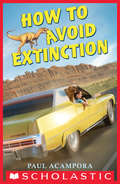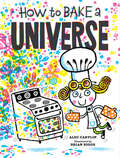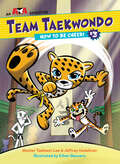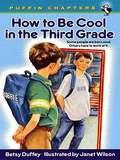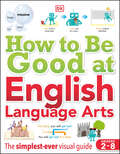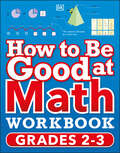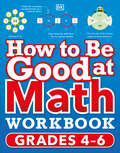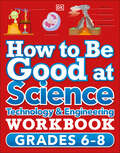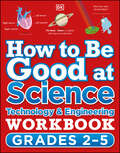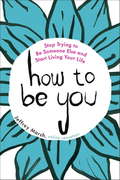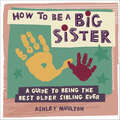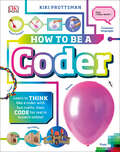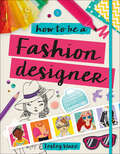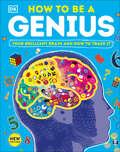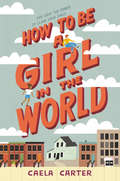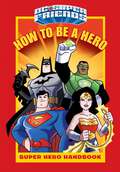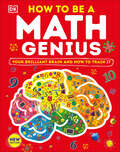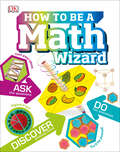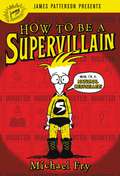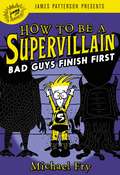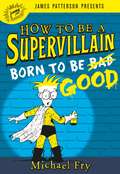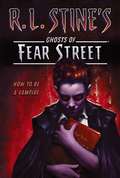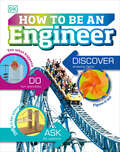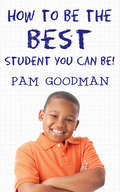- Table View
- List View
How to Avoid Extinction (Scholastic Press Novels)
by Paul AcamporaFor fans of Gary Schmidt and Joan Bauer, a laugh-out-loud intergenerational road trip story from acclaimed author Paul Acampora!Since the death of his grandfather, Leo's number one chore has been to chase after his grandmother who seems to wander away from home every few days. Now, Gram's decided to roam farther than ever. And despite his misgivings, Leo's going along for the ride. With his seventeen-year-old cousin, Abbey, and an old, gassy dog named Kermit, Leo joins Gram in a big, old Buick to leave their Pennsylvania home for a cross-country road trip filled with fold-out maps, family secrets, new friends, and dinosaur bones.How to Avoid Extinction is a middle grade comedy about death and food and family and fossils. It's about running away from home and coming back again. For Leo, it's about asking hard questions and hopefully finding some sensible answers. As if good sense has anything to do with it. Against a backdrop of America's stunning size and beauty, it's also about growing up, getting old, dreaming about immortality, and figuring out all the things we can -- and can't -- leave behind.
How to Bake a Universe
by Alec CarvlinThis whimsical and informed debut picture book takes a leaf from a cookbook to show readers how the universe came into being. To bake a universe, you’ll need a heaping pile of nothing. That’s right, not a single thing! Just make sure you have enough . . . Alec Carvlin breaks down the Big Bang into the steps of a recipe, from the formation of quarks and atoms (preheat your oven to Absolute Hot) to the compression of gases into stars and planets (just set your timer for 180 million years). Carvlin expertly balances mind-boggling facts with snappy storytelling, and Brian Biggs’s bold and contagiously cheerful illustrations bring the infinite down to the bite-sized. How to Bake a Universe is an accessible and playful authority on the formation of the universe and a heartfelt commentary on how to live in it.
How to Be Cheeri (Team Taekwondo #3)
by Jeffrey Nodelman Master Taekwon LeeBreak out your uniforms and tie your belts! Team Taekwondo is back with Cheeri, an over-achieving cheetah who must learn that having FUN is just as important as HARD WORK!Cheeri likes to work hard and do everything perfectly. Baeoh likes to have fun…and usually forgets to work at all! When Master Jahngsoo teams them together for their next challenge, Cheeri isn't exactly happy. Baeoh doesn't take anything seriously! But they'll have to learn to work together, or they could be stuck with the same belts forever!In full-color scenes, How to Be Cheeri tackles the importance of balancing hard work and fun. With plenty of humor and insight into the struggles children face, this installment is sure to be a fan favorite--passed from one reader to another.
How to Be Cool in the Third Grade
by Betsy DuffeyIt's not easy to seem cool when the whole class knows you wear superhero underwear and your mom still kisses you goodbye at the bus stop. But Robbie York has a plan. 1) Get rid of the name Robbie. 2) Get jeans. 3)Avoid bullies like Bo Haney. If only it were that simple!
How to Be Good at English Language Arts: The Simplest-ever Visual Guide (DK How to Be Good at)
by DKIdeal for home learning, this simple and inspirational book has everything you need to get to grips with grammar and punctuation, and master essential reading and writing skills.Need help telling your adjectives from your adverbs? Struggling to work out what that poem is really about, or where to begin with your essay? Then this may be the book for you! How to be Good at English Language Arts uses short, straightforward explanations and clear graphics to shed light on the trickiest of topics, making this language-learning book the perfect guide to understanding and using the English language.Illustrated examples make daunting grammar accessible and fun, and help develop an understanding that can be applied to school studies. Annotated texts complement concise, practical guidance to support students in developing sound analytical and writing skills. The carefully selected reading recommendations will inspire reading for pleasure, while clear links between topics will ensure that students not only understand language techniques but know how to apply them effectively.Dive into the pages of this great grammar guide for kids to discover: -Visual explanations make concepts easy to grasp at first glance-Every topic is broken down into short sections of text written in simple language-Annotated texts provide students with clear guidance on identifying and applying language techniques effectively-&“Further reading&” features encourage reading for pleasure-&“World of words&” features bring English to life, connecting language on the page with language in the real world How to be Good at English Language Arts will inspire students to uncover and enjoy the art and power of language, supporting them on their way to becoming confident and accomplished readers, writers, and speakers. The highly visual approach alongside clear, short explanations breaks down the language and makes the subject easy to understand, whilst also supporting education curricula around the world for children aged 9-12; it is also suitable for foreign students studying English language and literature, and an ideal resource for children studying at home.
How to Be Good at Math Workbook Grades 2-3 (DK How to Be Good at)
by DKUnleash your child&’s inner math genius and help them master math for Grades 2 and 3!Whether you enjoy math or not, it&’s an essential subject to understand. See how everything adds up with this fully illustrated home-study guide.Get inspired by numbers and see how mathematical explanations come to life with this engaging math book for kids! It includes: • Full color, with a clear layout. • Clear instructions that are easy for children to follow by themselves. • Answers that are given at the back of the book. • Practice questions and practical exercises to help expand your child&’s knowledge of the subject. Make math manageableHow to be Good at Math Grade 2-3 keeps the math simple and easy to understand! It comes packed with eye-catching illustrations and easy-to-follow instructions to teach kids everything they need to know about math. This brilliant visual math workbook is ideal for reinforcing classroom teaching. It helps kids understand what they&’ve learned in school and gives them extra math revision practice before an important test!Perfect for kids ages 7-9, this colorful math practice book covers all the key areas of the school curriculum for this level. It includes fractions, multiplication, divisio, measurement, geometry, coordinates, data handling and graphs. And there are answers at the back to check that you're on the right path.This engaging and clear workbook accompanies How to be Good at Math Grade 4-6, which covers ages 9-11 (Grades 4, 5, and 6).Discover How to be Good in other subjectsDK&’s successful How to be Good at... workbook series provides your child with the tools to learn how to look at the world around them and figure out how it works. There are more books to discover! Learn all about the influence of science and technology in the modern age with How to Be Good at Science, Technology, and Engineering.
How to Be Good at Math Workbook, Grades 4-6: The simplest–ever visual workbook (DK How to Be Good at)
by DKHelp your child learn and master grade 4, 5 and 6 math in no timeWhether you&’re good at math or not, it&’s an essential subject to understand. Luckily, you don&’t have to be a math genius to follow along with this fully illustrated home-study guide!Get inspired by numbers and see how mathematical explanations come to life with this engaging math book for kids! It includes: • Full color pages, with clear, and easy to comprehend layouts • Clear instructions that are easy for children to follow by themselves. • Answer guides at the back of the book • Practice questions and practical exercises to help expand your child&’s knowledge of the subject. Make math manageablePacked with eye-catching illustrations and easy-to-follow instructions, How to be Good at Math Grade 4-6 continues to keep the math simple and easy to understand for kids! This brilliant visual math workbook teaches them everything they need to know about math. Ideal for reinforcing classroom teaching, it helps kids understand what they&’ve learned in school and gives them extra math revision practice before an important test!Perfect for children ages 9-11, this colorful math practice book covers all the key areas of the school curriculum for this level. It includes working with fractions and decimal numbers, percentages, long multiplication and division, measurement, geometry, coordinates, statistics, probability and basic algebra. And there are answers at the back to check that you&’re on the right path.This engaging and clear workbook accompanies How to be Good at Math Grade 2-3, which covers ages 7-9 (Grades 2 and 3).Help your child get better in other topicsDK&’s successful How to be Good at... workbook series provides your child with the tools to learn how to look at the world around them and figure out how it works. There are more books to discover! Learn all about the influence of science and technology in the modern age with How to Be Good at Science, Technology, and Engineering.
How to Be Good at Science, Technology and Engineering Workbook, Grade 6-8 (DK How to Be Good at)
by DKGain a complete understanding of Grades 6, 7 and 8 STEM subjects.From atoms and rocketships to vaccines and the human nervous system, this fully illustrated home learning workbook will help your child be at the top of their science class!This engaging science book for kids makes tricky topics and challenging concepts completely crystal clear! Here&’s what&’s inside: • Covers the core STEM topics, from biology, chemistry and physics, to technology. • Clearly laid out with easy-to-follow instructions for children to use by themselves. • Answers are given at the back of the book. • Practice questions and practical exercises to help expand your child&’s knowledge of the subject. Take your child&’s STEM learning to the next levelDid you know that many plants have a transport system to carry water and nutrients wherever they are needed? Or that most power stations around the world burn fossil fuels to make electricity? Packed with fascinating facts, fun graphics and step-by-step explanations, this brilliant visual workbook makes understanding science, technology and engineering super simple! It&’s perfect for extra science revision practice before an important test. Perfect for children ages 11-14, this colorful science practice book covers all the key areas of the school curriculum for this level. It includes genes and DNA, molecules, chemical reactions, the periodic table, heat transfer, electricity and magnetism, seasons and climate zones, and lots more. And there are answers at the back to check that you're on the right path.This engaging and clear science workbook accompanies How to be Good at Science, Technology, and Engineering Grade 2-5 which covers ages 7-11 (Grades 2, 3, 4 and 5).Discover How to be Good at other subjectsDK&’s successful How to be Good at... workbook series provides your child with the tools to learn how to look at the world around them and figure out how it works. There are more books to discover! Learn everything they need to know about math through eye-catching illustrations and easy-to-follow instructions with How to Be Good at Math.
How to Be Good at Science, Technology and Engineering Workbook, Grades 2-5 (DK How to Be Good at)
by DKHelp your child master Grade 2 to 5 STEM subjects and become a science superstar!From learning how the heart works to understanding what evolution is, this fully illustrated home learning workbook makes grasping science, technology and engineering as easy as ABC.This engaging science book for kids makes tricky topics and challenging concepts completely crystal clear! Here&’s what&’s inside: • Covers the core STEM topics for grades 2-5, from biology, chemistry and physics to technology. • Clearly laid out with easy-to-follow instructions for children to use by themselves. • Answers are given at the back of the book. • Practice questions and practical exercises to help expand your child&’s knowledge of the subject. Inspire your child with scienceDid you know that the human skeleton is made up of 206 bones? Or that the Earth&’s human population has quadrupled in the last hundred years? Packed with fascinating facts, fun graphics and step-by-step explanations, this brilliant visual workbook will keep budding scientists and engineers engaged. It helps kids understand what they&’ve learned in school and gives them extra science revision practice before an important test. Perfect for children ages 7-11, this colorful science practice book covers all the key areas of the school curriculum for this level. It includes the human body, animal and plant life, evolution, states of matter, energy, simple mechanics, the Earth, Moon and Sun, and lots more. And there are answers at the back to check that you&’re on the right path.This engaging and clear science workbook accompanies How to be Good at Science, Technology, and Engineering Grade 5-8 which covers ages 11-14 (Grades 5, 6, 7 and 8).Discover How to be Good in other subjectsDK&’s successful How to be Good at... workbook series provides your child with the tools to learn how to look at the world around them and figure out how it works. There are more books to discover! Learn everything they need to know about math through eye-catching illustrations and easy-to-follow instructions with How to Be Good at Math.
How to Be You: Stop Trying to Be Someone Else and Start Living Your Life
by Jeffrey MarshThis book is about how to finally give up on feeling bad about yourself and discover the best person you can be.An interactive experience, How to Be You invites you to make the book your own through activities such as coloring in charts, answering questions about how you do the things you do, and discovering patterns in your lives that may be holding you back. Through Jeffrey's own story of "growing up fabulous in a small farming town"--along with the stories of hero/ines who have transcended the stereotypes of race, age, and gender--you will discover that you are not alone, can deepen your relationship with yourself, and find the courage to take a leap that will change your life.From the Trade Paperback edition.
How to Be a Big Sister: A Guide to Being the Best Older Sibling Ever
by Ashley MoultonHelp future big sisters get ready for the baby!This supportive guide encourages girls aged 5 to 7 to become confident big sisters. How To Be A Big Sister takes readers on a journey from getting ready for the baby, to welcoming the new sibling home and becoming their new best friend. With inspiring stories about different kinds of families, this guide will prepare future big sisters for every step of the way with thought exercises, fun activities, and helpful tips.This helpful guide includes:Questions that help navigate grown-up talks about this new role within the family.Encouraging tips about how big sisters can be amazing helpers.Fun activities to welcome the new baby and spend time with the whole family.Watch a little girl grow into an amazing big sister with this helpful guide.
How to Be a Cat
by Nikki McClure“The simplicity and flow of page design are beautifully done as viewers follow a kitten and his mother as she teaches him basic feline behavior.” —School Library Journal (starred review)In cut-paper artist Nikki McClure’s latest picture book, a kitten practices the basics of feline behavior over the course of a day. A single word of text per spread teaches readers “how to be a cat”—how to stretch, clean, pounce, feast—while the striking paper cuts illustrate the kitten’s attempts to imitate an adult cat’s mastery of each skill. At times the kitten triumphantly succeeds, and at other times the kitten struggles, in vignettes that range from whimsical to profound.A celebration of all things feline, How to Be a Cat also tells a universal story of mastering life skills, and of the sometimes tender, sometimes stern relationship between parent and child, teacher and pupil. Cat lovers of all ages will connect to this loving portrayal of a mentor-student relationship.“Purrrrfect for beginning readers and little artists with an eye for fine cut-paper compositions and craftsmanship.” —Kirkus Reviews (starred review)“The lively verbs and pictures will inspire young readers to imitate the kitten’s actions, all the way to the last page, when the two cats curl up to ‘Dream.’ Part concept book of actions, part a day in the life of a cat, the pages provide two kinds of narratives, no small feat for such a simple-looking story.” —New York Journal of Books“McClure’s cut-paper spreads can be mesmerizing.” —Publishers Weekly“McClure wonderfully captures the shape and movement of the feline form.” —The Bulletin of the Center for Children’s Books
How to Be a Coder: Learn to Think like a Coder with Fun Activities, then Code in Scratch 3.0 Online (Careers for Kids)
by Kiki ProttsmanLearn to think like a coder without a computer! Each of the fun craft activities included in this book will teach you about a key concept of computer programming and can be done completely offline. Then you can put your skills into practice by trying out the simple programs provided in the online, child-friendly computer language Scratch.This crafty coding book breaks down the principles of coding into bite-sized chunks that will get you thinking like a computer scientist in no time. Learn about loops by making a friendship bracelet, find out about programming by planning a scavenger hunt, and discover how functions work with paper fortune tellers. Children can then use their new knowledge to code for real by following the clear instructions to build programs in Scratch 3.0.Perfect for kids aged 7-9, the various STEAM activities will help teach children the crucial skills of logical thinking that will give them a head-start for when they begin programming on a computer. Famous scientist pages teach children about coding pioneers, such as Alan Turing and Katherine Johnson, and topic pages, such as the Internet, give kids a wider understanding of the subject.Written by computer science expert Kiki Prottsman, How to be a Coder is so much fun kids won't realize they're learning!
How to Be a Fashion Designer (Careers for Kids)
by Lesley Ware"Highly recommended for any aspiring fashionistas." – School Library JournalDesign, style, and accessorize clothes with this fun guide full of practical fashion design ideas for kids!Draw and color creations, choose materials, and learn to design through drawing your own fashion. Packed with practical tips and inspiration, children can enjoy experimenting with new ideas. Illustrations mixed with photography show kids how to choose gorgeous colors, design dress shapes, customize T-shirts, design a bag, pick a color palette, design with texture, and add sparkle to their accessories in simple, easy-to-follow design tasks and simple practical projects. Using inspiration from the natural world, everyday life, and their own imagination, children can design outfits from scratch and learn how to put together the clothes and accessories they already own in fun, stylish ways. Contents support the STEAM (Science, Technology, Engineering, Art, Math) approach to cross-curricular learning.
How to Be a Genius: Your Brilliant Brain and How to Train It (DK Train Your Brain)
by DKUse your eyes, ears, and imagination to explore your amazing mind and sharpen your wits. Do you want to calculate like Einstein, paint like Picasso, or compose like Mozart? Put your gray matter to the brain-training test and see how you measure up to some of the greatest thinkers in history. Tackle mind-boggling puzzles, games, and optical illusions and discover what makes your brain work: from why you smile to what is going on inside your head and what side of your brain does what. Learn about neurons, how memory works, and how to boost your creativity.How to Be a Genius makes a complex subject fun, accessible, and exciting, and is perfect for any child, whether they are intent on becoming a genius or just want to have fun with clever activities at home, on a journey, or in school.
How to Be a Girl in the World
by Caela CarterFrom the critically acclaimed author of the ALA Notable and Charlotte Huck Honor Book Forever, or a Long, Long Time comes a poignant coming-of-age novel about the complicated parts of growing up, finding your voice, and claiming your space. <P><P>Perfect for fans of Rebecca Stead, Laurel Snyder, or Ali Benjamin! Lydia hasn’t felt comfortable in her own skin since the boys at her school started commenting on the way she looks in her uniform. <P><P> Her cousin and friends think she should be flattered, but the boys—and sometimes her mom’s boyfriend, Jeremy—make Lydia uncomfortable and confused. Even more confusing is when Jeremy hovers too close and hugs a little too long. <P><P>Then her mom surprises her by buying a dilapidated house in their neighborhood. Lydia hopes to find a little bit of magic in their new home. But just like the adults in her life, and God, and her friends, the magic Lydia deeply believes in eventually loses its power to keep her safe. <P><P>And as seventh grade begins, Lydia wonders: Is there a secret to figuring out how to be a girl in the world?
How to Be a Hero (DC Super Friends)
by Courtney CarboneSuperman, Wonder Woman, Batman, Green Lantern, and the other DC Super Friends know that it takes more than a caped costume and special powers to be a true hero. What matters most is doing the right thing! Super-heroes-in-training can learn timeless lessons from their favorite DC Super Friends in this 64-page, full-color handbook!
How to Be a Math Genius: Your Brilliant Brain and How to Train It (DK Train Your Brain)
by DKRefine your math skills and be well on your way to becoming a numbers whizz!Learn about the intriguing and wonderful world of mathematics, how your brain works to interpret numbers and shapes, and how to improve your math skills in this informative math book. This educational fact-filled guide to math will have you beaming with newfound knowledge. It includes: • Fun things to do, from brainteasers to puzzles • Clear, engaging text that demystifies math • Tips and techniques to help you boost their brainpower • Brand new biographies of pioneering mathematicians, such as Grace Hopper and Katherine Johnson • Lively illustrations that bring the topic to life and make the subject matter engaging for kids • Creative math exercises and activities put kids&’ skills to the test This informative educational book allows young readers to understand the basic ideas behind math. It not only teaches new math skills, but also provides them with greater confidence in their own ability to handle numbers and mathematical problems. How To Be A Math Genius puts the ideas into context to help children understand why math is useful and even exciting! Uncover the amazing sphere of algebra, puzzling primes, super sequences and special shapes. Challenge yourself with thrilling quizzes, solve dynamic puzzles and crack complex codes and inspirational geometrical illusions. Learn about the big names and even bigger brains who made mathematical history such as Pythagoras, Grace Hopper and Alan Turing. The books in the Train Your Brain series make complex subjects fun, accessible and exciting, and are perfect for any child! Journey through science subjects at home and have fun with clever activities! Other books in the series include Train Your Brain: How to be a Genius.
How to Be a Math Wizard (Careers for Kids)
by DKBring math to life with this exciting new math activity book for kids.With 30 activities and crafts that children can play their way through, this kids' book takes the fear out of math--and gives you the skills to become a math expert. Children will find out that being a mathematician isn't just about scrawling numbers on a dusty chalkboard--it's part of our everyday lives! How to Be a Math Wizard teaches kids to think like math pros as they ask mathematical questions and get hands-on with key math concepts. From calculation and numbers; to space, shape, and measure; all core curriculum math topics are covered in creative and engaging ways. This book invites kids to investigate math in a playful, hands-on way, using things from around the house: find out about perimeter by designing and building a mini house, practice multiplication through a game of bingo, sweeten probability through chocolate, and uncover the mystery of coordinates through a treasure map.If you like solving problems, making things, and learning facts, then this is the book for you, mathematician!
How to Be a Supervillain (How to Be a Supervillain #1)
by James Patterson Michael FryVictor Spoil comes from a long line of famous supervillains and he's fully expected to join their ranks one day. But to his family's utter disappointment, Victor doesn't have a single bad-guy bone in his body. He won't run with scissors, he always finishes his peas, and he can't stand to be messy. Hopeless!As a last-ditch effort before they give up and let him be a--gasp!--civilian, Victor's exasperated parents send him to apprentice under a disgraced supervillain called The Smear. This matchup starts off as a complete disaster, but Victor and The Smear eventually find that they have a lot to learn from each other. When the stakes get high as Victor is forced to choose between his mentor and his family morals (or lack thereof)...what will the world's nicest bad guy do?In this rollicking middle-grade adventure, Michael Fry's witty text and hysterical artwork combines superhero action with classic fish-out-of-water humor.
How to Be a Supervillain: Bad Guys Finish First (How to Be a Supervillain #3)
by Michael FryVictor Spoil realizes he's not cut out for life as a supervillain and instead decides to be...a librarian. Little does he know that librarians are a kick-butt secret society who will stop at nothing to control---and shush---the world! It's time for Victor Spoil to hang up his cape. After trying to be the supervillain his diabolical parents always wanted, it's time he followed his own dream to become a librarian. As a nice guy who likes quiet and order, Victor knows he'll be happy reading books for the rest of his life.But when his library is suddenly attacked by robot ninjas and he sees his boss leap into battle, Victor learns that librarians are actually a secret league working to bring order to the whole world. It all sounds wonderful to Victor...until he finds out that his friends are planning to destroy the librarians' plan for peace. Who's right and who's wrong? Sometimes it's hard to tell if you're a good guy...or a supervillain.
How to Be a Supervillain: Born to Be Good (How to Be a Supervillain #2)
by Michael FryA sequel has never been this good...at being bad! In this highly anticipated follow-up to the bestselling How to Be a Supervillain, Victor Spoil must save the world from an evil scheme to enslave the superheroes and villains--to his parents' utter disappointment.Victor Spoil hates the Junior Super Academy. It makes him cranky--and his parents couldn't be prouder, because supervillains aren't meant to be nice. Until Victor confesses he wants to leave and become a librarian. The horror!But when superheroes and villains--including his parents--start disappearing, only a dedicated do-gooder like Victor can track them down. He discovers that the supers are being captured to square off against aliens in gladiator-like shows. And unlike the scripted fights that the supers usually sign up for, these battles are to the death!Victor and his fellow super students must join together and harness their super powers to battle this dastardly mega-villain. But to be a hero, Victor finally has to embrace his inner villain. Will he be able to stoop that low?
How to Be a Vampire
by R. L. StineLife was pretty average for Andrew. Until the morning he woke up undead. First there were bite marks on his neck. Then he tried to eat garlic--but that didn't work out so well. And now he's got this weird urge to sleep upside down.... Andrew's kind of excited about being a vampire. He'll get to fly, stay up all night, and totally scare his sister. But when he meets his vampire teacher, Andy realizes that being a vampire isn't as all it's cracked up to be....
How to Be an Engineer (Careers for Kids)
by Carol VordermanClearly explained engineering concepts and fun, simple projects give kids ages 7-9 the chance to put their STEAM knowledge to the test!Teach kids to think like an engineer! The engaging projects in this book will encourage kids to investigate using items from around the house. Build a robot arm out of rulers; learn about jet propulsion with balloons; crush toilet-paper rolls to explore materials; and much more. Read about how engineers use STEAM subjects and their imaginations to think critically and solve problems. Be inspired by engineering heroes such as Leonardo da Vinci, Mae Jemison, and Elon Musk. Fun questions, engineering experiments, and real-life scenarios come together to make engineering relevant. In How to Be an Engineer, the emphasis is on inspiring kids, which means less time at a computer and more time exploring in the real world.
How to Be the Best Student You Can Be
by Pam GoodmanDid you know that the Wright Brothers, Henry Ford, Oprah Winfrey, Walt Disney, and Steve Jobs all used skills that are taught in school to create their dream jobs? They took their passion, used their skills, learned from their mistakes and made their vision a reality. You can do that too! This book will help you master the skills you need to become the best student you can be. Learn how everything at school fits together when everyone does their job. You will discover your part in your education and be empowered with a voice that will be heard.
